Rear I/O

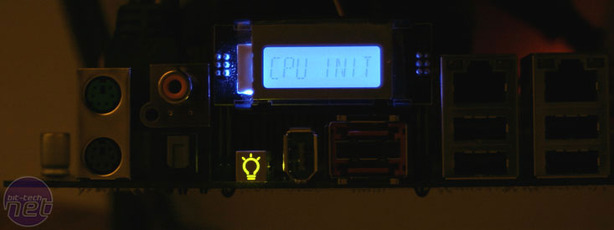
In addition there are the usual PS2 ports and four USB 2.0 topped off by both Gigabit Ethernet RJ45 sockets. Asus provides two eSATA, which is the most we've seen on any board to date, in addition to a 6-pin Firewire plug, and S/PDIF in both coaxial and optical forms.
Its feature packed, more so than Abit's gaming motherboards, and whilst you don't get any legacy parallel or serial ports would you really want them on a gaming motherboard? If you're still using a serial mouse then spend the money on a decent optical/laser one first! And most parallel port peripherals have been superseded by better USB alternatives as well. Whilst a couple more USB ports wouldn't go amiss, we can't really say that Asus hasn't created a unique and very useful rear I/O panel.
BIOS
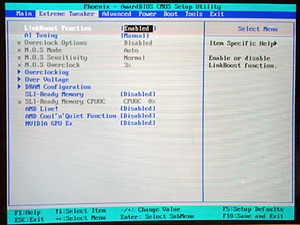
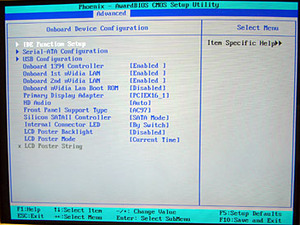
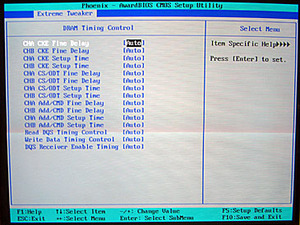
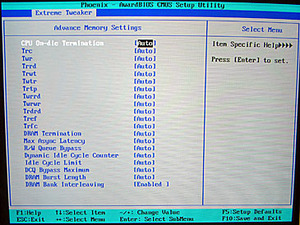
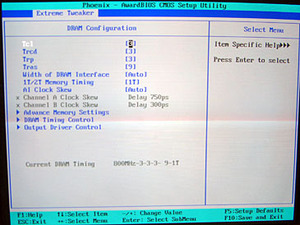
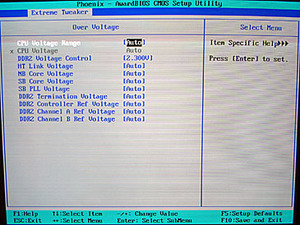
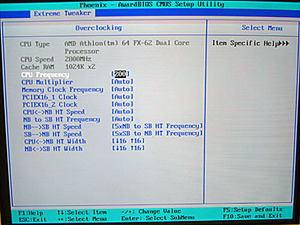
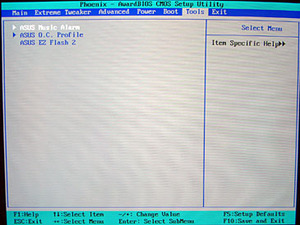
Frequency Adjustments:
CPU Multiplier; FSB (1MHz increments from 200 to 650MHz); C51 northbridge-MCP55 southbridge frequency (200MHz to 400MHz in 1MHz increments); C51 northbridge-MCP55 southbridge and CPU-C51 northbridge multiplier and data width (8x8bit/16x16bit, 1-5x); PCI-Express x16 1 & 2 clock (100MHz to 200MHz in 1MHz increments); Memory Clock: 200/266/333/400MHz (DDR);Voltage Adjustments:
CPU Voltage (0.85V to 1.85V in 0.1V increments); C51 northbridge voltage (1.20V to 1.575V in 0.025V increments); MCP55 southbridge (1.50V to 1.875V in 0.025V increments); HyperThreading (1.20V to 1.575V in 0.025V increments); Memory (1.85V to 3.425V in 0.025V increments); DDR2 SB PLL Voltage (1.5V to 1.85V in 0.05V increments); DDR2 termination voltage (DDR2/2 -150mV to DDR2/2 +150mV in 50mV increments); DDR2 controller ref voltage (DDR2/2 -150mV to DDR2/2 +150mV in 50mV increments); DDR2 channel A and B ref voltage (DDR2/2 -100mV to DDR2/2 +150mV in 50mV increments);Memory Timings:
Command Rate, Tcl (CAS), Tras (Row Active Strobe Time), Trcd (Row Address to Column Address Delay), Twtr (Internal Write to Read Command Delay), Trc (Row Cycle Time), Trp (Row Precharge Time), Trtp (Read to Precharge Delay), Read DQS Skew/Timing; Command Rate; Trc, Twr, Trrd, Trwt, Trtp, Twrrd, Twrwr, Trdrd, Trfc, Dram Termination, Async Latency, R/W Queue Bypass, Dynamic Idle Cycle Counter, Idle Cycle Limit, DCQ Bypass Maximum, DRAM Burst Length, DRAM Bank Interleaving; Channel Fine Delay and Setup Time, Channel CS/ODT Fine Delay and Setup Time, Channel Add/CMD Fine Delay and Setup Time, Read DQS Timing Control, Write Data Timing Control, DQS Receiver Timing Control, Channel Drive Strength, Channel CS/ODT Drive Strength, Channel Add Drive Strength, Memory Clock Drive Strength, Data Drive Strength, DQS Drive Strength, DRAM Drivers Weak Mode.Other Inclusions:
SLI-Ready Memory, AMD Live!, AI Tuning, AI Overclock (3-10%), AI NOS (3-10%), AI NET2, Asus Music Alarm, Asus O.C. Profile, Asus EZ Flash 2.Well Asus certainly went all out when it comes to this board, with levels upon levels of BIOS options. It's not that hard to navigate but having everything on a single page would make it impossible to navigate. There's plenty of frequency adjustments as well as some killer (literally) voltage options like 3.4+V for the memory DIMM voltage amongst four other memory related voltage options.
Memory timing options boarder on the insane, with the BIOS offering three sub levels of independent adjustments within the memory timings sub section. Some Asus offerings are a little confusing though, for example when it comes to AI NOS, AI Overclocking and manual overclocking it needs a little understanding as to what each does (AI NOS = overclocking on load, AI Overclocking = auto overclocking to a set percentage and manual is all down to you) and what you want out of the board. But it's almost a case of too much choice to a certain extent, where the new user is bamboozled by the overwhelming options available, but, I suppose covering all bases affords a wider satisfied user base.

MSI MPG Velox 100R Chassis Review
October 14 2021 | 15:04









Want to comment? Please log in.